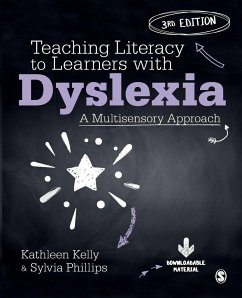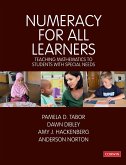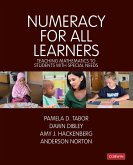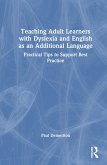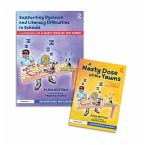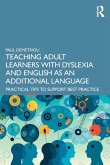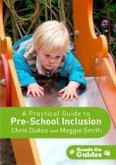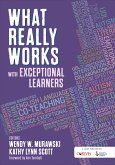- Broschiertes Buch
- Merkliste
- Auf die Merkliste
- Bewerten Bewerten
- Teilen
- Produkt teilen
- Produkterinnerung
- Produkterinnerung
This bestselling text offers theoretical detail and depth alongside a programme of activities to implement in practice which can improve literacy levels and support children with dyslexia.
Andere Kunden interessierten sich auch für
![Numeracy for All Learners Numeracy for All Learners]() Pamela D TaborNumeracy for All Learners160,99 €
Pamela D TaborNumeracy for All Learners160,99 €![Numeracy for All Learners Numeracy for All Learners]() Pamela D TaborNumeracy for All Learners65,99 €
Pamela D TaborNumeracy for All Learners65,99 €![Teaching Adult Learners with Dyslexia and English as an Additional Language Teaching Adult Learners with Dyslexia and English as an Additional Language]() Paul DemetriouTeaching Adult Learners with Dyslexia and English as an Additional Language174,99 €
Paul DemetriouTeaching Adult Learners with Dyslexia and English as an Additional Language174,99 €![An Adventure with Dyslexia and Literacy Difficulties An Adventure with Dyslexia and Literacy Difficulties]() Plum HuttonAn Adventure with Dyslexia and Literacy Difficulties43,99 €
Plum HuttonAn Adventure with Dyslexia and Literacy Difficulties43,99 €![Teaching Adult Learners with Dyslexia and English as an Additional Language Teaching Adult Learners with Dyslexia and English as an Additional Language]() Paul DemetriouTeaching Adult Learners with Dyslexia and English as an Additional Language32,99 €
Paul DemetriouTeaching Adult Learners with Dyslexia and English as an Additional Language32,99 €![A Practical Guide to Pre-school Inclusion A Practical Guide to Pre-school Inclusion]() Chris DukesA Practical Guide to Pre-school Inclusion62,99 €
Chris DukesA Practical Guide to Pre-school Inclusion62,99 €![What Really Works with Exceptional Learners What Really Works with Exceptional Learners]() What Really Works with Exceptional Learners48,99 €
What Really Works with Exceptional Learners48,99 €-
-
-
This bestselling text offers theoretical detail and depth alongside a programme of activities to implement in practice which can improve literacy levels and support children with dyslexia.
Hinweis: Dieser Artikel kann nur an eine deutsche Lieferadresse ausgeliefert werden.
Hinweis: Dieser Artikel kann nur an eine deutsche Lieferadresse ausgeliefert werden.
Produktdetails
- Produktdetails
- Verlag: Sage Publications Ltd
- 3 Revised edition
- Seitenzahl: 520
- Erscheinungstermin: 20. April 2022
- Englisch
- Abmessung: 235mm x 191mm x 28mm
- Gewicht: 926g
- ISBN-13: 9781529767834
- ISBN-10: 1529767830
- Artikelnr.: 62926710
- Herstellerkennzeichnung
- Libri GmbH
- Europaallee 1
- 36244 Bad Hersfeld
- gpsr@libri.de
- Verlag: Sage Publications Ltd
- 3 Revised edition
- Seitenzahl: 520
- Erscheinungstermin: 20. April 2022
- Englisch
- Abmessung: 235mm x 191mm x 28mm
- Gewicht: 926g
- ISBN-13: 9781529767834
- ISBN-10: 1529767830
- Artikelnr.: 62926710
- Herstellerkennzeichnung
- Libri GmbH
- Europaallee 1
- 36244 Bad Hersfeld
- gpsr@libri.de
Dr Kathleen Kelly PhD, MA (SEN), Dip TESL, AMBDA, is an independent consultant and trainer in the field of specific learning difficulties. For many years she was a Senior Lecturer at Manchester Metropolitan University in the Centre for Inclusion and Disability Studies where she was Programme Leader for the MA in Specific Learning Difficulties and the Post Graduate Certificate in Dyscalculia. For several years she has taught courses on specific learning difficulties as part of the initial teacher training programme in addition to postgraduate awards. She has presented papers in this area at a number of international conferences and was part of the MMU research team that evaluated the Department for Education funded project 'Teaching for neurodiversity' led and coordinated by the British Dyslexia Association (2017). She has considerable experience in delivering courses to meet the criteria set out by the British Dyslexia Association for Approved Teacher Status (ATS) and is an Associate Member of the British Dyslexia Association (AMBDA). She was a member of the SASC/BDA working party (2019) which was set up to develop a new definition of dyscalculia and to produce guidance on identification and assessment. Kathleen has taught a wide range of learners with dyslexia, from children as young as 4 years to 16 years. She has worked in both mainstream and special schools, for language support and learning support services, as a SENCO in a primary school, and as Head of Sixth Form in a special school. She has many years of experience in supporting multilingual children with special educational needs (including specific learning difficulties). Multilingualism and dyslexia is a particular area of interest, and her doctorate was also in this area. She is co-author of Phillips and Kelly () Assessment of Learners with Dyslexic-Type Difficulties, 2nd edition and author of Kelly (2020) Identifying, Assessing and Supporting Learners with Dyscalculia.
Part I: Teaching Learners With Dyslexia: Theory and Context
Chapter 1: What Is Dyslexia?
Chapter 2: The Role of Memory in Acquiring Literacy Skills
Chapter 3: Phonology, Phonological Awareness and Literacy
Chapter 4: Reading, Spelling and Dyslexia: Theory and Research
Chapter 5: Dyslexia and Learners for Whom English Is an Additional Language
Part II: Teaching Literacy to Learners With Dyslexic-Type Difficulties
Chapter 6: Strategies for Reading
Chapter 7: Strategies for Spelling
Chapter 8: Strategies for Writing
Part III: Conquering Literacy: A Multisensory Programme for Teaching
Learners With Dyslexia
Chapter 9: Principles, Teaching Methods and Programme Structure
Chapter 10: Lesson Planning
Chapter 11: Alphabet Knowledge and Skills
Chapter 12: The Role of Memory in the Programme
Chapter 13: Introducing the New Teaching Point in a Lesson
Part IV: Conquering Literacy - A Multisensory Programme
Part V: The Accelerated Programme
Part VI: Downloadable Resources
Chapter 1: What Is Dyslexia?
Chapter 2: The Role of Memory in Acquiring Literacy Skills
Chapter 3: Phonology, Phonological Awareness and Literacy
Chapter 4: Reading, Spelling and Dyslexia: Theory and Research
Chapter 5: Dyslexia and Learners for Whom English Is an Additional Language
Part II: Teaching Literacy to Learners With Dyslexic-Type Difficulties
Chapter 6: Strategies for Reading
Chapter 7: Strategies for Spelling
Chapter 8: Strategies for Writing
Part III: Conquering Literacy: A Multisensory Programme for Teaching
Learners With Dyslexia
Chapter 9: Principles, Teaching Methods and Programme Structure
Chapter 10: Lesson Planning
Chapter 11: Alphabet Knowledge and Skills
Chapter 12: The Role of Memory in the Programme
Chapter 13: Introducing the New Teaching Point in a Lesson
Part IV: Conquering Literacy - A Multisensory Programme
Part V: The Accelerated Programme
Part VI: Downloadable Resources
Part I: Teaching Learners With Dyslexia: Theory and Context
Chapter 1: What Is Dyslexia?
Chapter 2: The Role of Memory in Acquiring Literacy Skills
Chapter 3: Phonology, Phonological Awareness and Literacy
Chapter 4: Reading, Spelling and Dyslexia: Theory and Research
Chapter 5: Dyslexia and Learners for Whom English Is an Additional Language
Part II: Teaching Literacy to Learners With Dyslexic-Type Difficulties
Chapter 6: Strategies for Reading
Chapter 7: Strategies for Spelling
Chapter 8: Strategies for Writing
Part III: Conquering Literacy: A Multisensory Programme for Teaching
Learners With Dyslexia
Chapter 9: Principles, Teaching Methods and Programme Structure
Chapter 10: Lesson Planning
Chapter 11: Alphabet Knowledge and Skills
Chapter 12: The Role of Memory in the Programme
Chapter 13: Introducing the New Teaching Point in a Lesson
Part IV: Conquering Literacy - A Multisensory Programme
Part V: The Accelerated Programme
Part VI: Downloadable Resources
Chapter 1: What Is Dyslexia?
Chapter 2: The Role of Memory in Acquiring Literacy Skills
Chapter 3: Phonology, Phonological Awareness and Literacy
Chapter 4: Reading, Spelling and Dyslexia: Theory and Research
Chapter 5: Dyslexia and Learners for Whom English Is an Additional Language
Part II: Teaching Literacy to Learners With Dyslexic-Type Difficulties
Chapter 6: Strategies for Reading
Chapter 7: Strategies for Spelling
Chapter 8: Strategies for Writing
Part III: Conquering Literacy: A Multisensory Programme for Teaching
Learners With Dyslexia
Chapter 9: Principles, Teaching Methods and Programme Structure
Chapter 10: Lesson Planning
Chapter 11: Alphabet Knowledge and Skills
Chapter 12: The Role of Memory in the Programme
Chapter 13: Introducing the New Teaching Point in a Lesson
Part IV: Conquering Literacy - A Multisensory Programme
Part V: The Accelerated Programme
Part VI: Downloadable Resources

